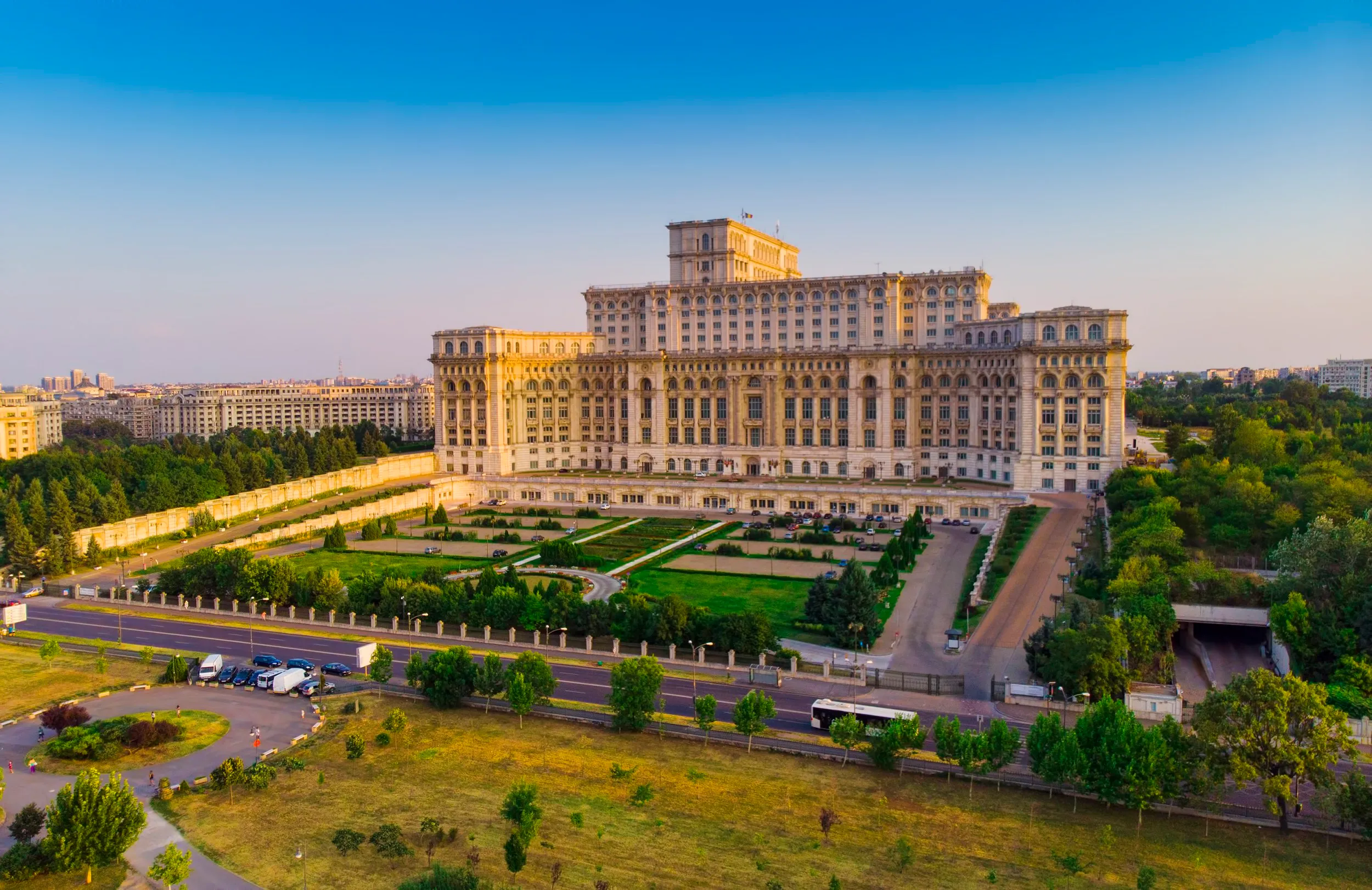Copyright metro

The ‘Paris of the East’ has really come into its own (Picture: Getty Images) A Wednesday afternoon and I’m sitting in a huge spa pool, sipping on a Martini and wondering if the jacuzzi is as enticing as it looks. Later, I’ll be taking a dip in the lithium-infused pool before heading off to a sunbed surrounded by palm trees to dry off with a good book. You might get the impression that I’m swanning around some luxury Caribbean island or far-flung part of the Pacific, but you’d be wrong. I’m in Bucharest, the elegant and intriguing capital of Romania. I first visited back in 2016, husband and then nine-year-old daughter in tow. Back then, a lot of redevelopment was underway, modern buildings arriving to sit alongside the city’s distinctive, French-inspired architecture (there’s a reason why it’s known as the Paris of the East, after all). The city has buckets of potential (Picture: Getty Images) We seemed like practically the only tourists in the city, and were struck by its dark but fascinating past, and how friendly everyone was. ‘I can’t believe more people don’t come here,’ I kept saying. They do now, though. Bucharest has become a hugely popular tourist destination in recent years, as more people discover the charms of the Romanian capital for themselves. And there’s never been a better time to visit. Not being an expensive destination, Bucharest is fabulously low-cost at every time of year, but the coming weeks are the cheapest month to see it. Flights from London start from £21 in November and £18 in December. And so nine years on, I set off to see how much it had changed. While there’s much to explore in Bucharest, it’s also a relatively compact city, with a population of around 2.3 million – about a quarter of London. Given it’s just a three-hour flight (with a two-hour time difference), it’s the perfect spot for a weekend break, with plenty to see and do in 48 hours. @sheislittlewonderer ♥️ ♬ Carol of the Bells02 – Aura Classica The volume of visitors I encountered this time around was testament to Bucharest’s rising stardom. New coffee shops, bars and restaurants have sprung up in the Old Town, sitting comfortably alongside swish boutique hotels and familiar chains. My room at the Hilton Garden Inn was as spotless and comfortable as you might expect, just a stone’s throw from the main part of the Old Town, and opposite the imposing building of the National Bank of Romania. Despite the sheen of modernity, many buildings – even the newer ones – retain a nod to the Communist era and its history. Bucharest’s Parliamentary Palace is the heaviest public building in the world (Picture: Getty Images) The facade of the Novotel – where I stayed on my previous visit – is modelled on an old theatre that was bombed during World War II, with a lavish entrance disguising the ultra-modern establishment inside. Older buildings, now disused and swamped in graffiti, are being primed for a makeover in the future. Visitors will notice that despite this redevelopment, there’s a distinct lack of skyscrapers and glass-fronted, towering office blocks. There’s a darker reason for this. Bucharest, while beautiful, is also considered to be the European Union capital most at risk of earthquakes due to being built on a fault line. It has suffered tremors in the past, including a devastating quake in 1977 that killed over 1,500 people. Evidence of the risks can be seen around town, with red signs dotted on older blocks indicating they could be too fragile to survive another quake. It’s easy to see why there’s such an appetite for a glow-up. Nothing can prepare you for the grandeur of the Parliamentary Palace (Picture: Caroline Westbrook) Familiar sights Among the newness, the city’s grand and familiar sights remain. Last time, we were unable to get into the Parliamentary Palace, the majestic headquarters of the Romanian Senate, due to political protests taking place outside. So this time, it was a must-visit. One of the largest public buildings in the world – the heaviest at over 4 million tonnes – it boasts 365,000 square feet of ornate ceilings, sweeping staircases and lavish crystal chandeliers. The building, ordered by former Communist leader Nicolae Ceaușescu, is entirely Romanian built – the dictator even refused help from the Czechs at the time, so determined was he for the entire project to be homegrown. @morgan.bold 24 HOURS IN BUCHAREST. Full itinerary and how much it all costs, from one traveller to another❤️✈️ #travel #traveltiktok #bucharest #bucharesttravel #bucharestplaces #bucharestfood #thermespa #travelwithme #cheapflight ♬ original sound – Morgan✨ A whole neighbourhood was demolished – houses, gardens, religious buildings, the lot – to make way for the palace, which is now regarded as an architectural marvel. It’s still a working building – the Senate meets there twice a week during parliamentary sessions – but it is also used for hosting ambassadors, banquets, receptions and all sorts of events. It was even the location for the wedding of famed Romanian gymnast Nadia Comaneci. While you’re in the centre, a tour with a knowledgeable guide is the best way to cover many of the sights. Both George and Carmen, my guides on extensive walking and driving tours across the city, provided excellent and detailed insight into its often troubled history. I came away having learned about everything from the former royal family – Romania was a constitutional monarchy from 1881 until 1947 – to the memorial to those who died in the 1989 Romanian revolution, through to the balcony where Ceaușescu gave his final speech before the fall of the Communist regime. And no visit to Bucharest is complete without a visit to Therme – the largest indoor wellness centre in the region. Therme is an oasis of wellness just outside the city (Picture: Caroline Westbrook) Originally opened in 2016 (with the company planning a similar spa for Manchester in the coming years) it’s become one of the city’s most popular attractions, and it’s not hard to see why. There are several different areas – including one with waterslides and other treats aimed at families. However, those looking for a child-free experience can head for The Palm, an ages 14 and up oasis of hot pools, outdoor beaches and smaller, wellness baths where you can soak in lithium-infused or Dead Sea salt-filled water and feel your wellbeing soar. There’s even a bar inside the main pool where you can sit and drink cocktails while the water laps around you. And while you think this might all be out of your budget, an afternoon session depending on when you go costs just 107 lei – around £18. Plan for a half-day there, and be sure to book in advance, as it fills up quickly. For an out-of-town excursion of a different kind, don’t miss Snagov Monastery, where you can see the tomb of local hero Vlad the Impaler – the man who inspired the Dracula legend. Don’t miss the tomb of Vlad the Impaler, aka Dracula (Picture: Caroline Westbrook) Bucharest’s food and drink scene Street food has exploded in popularity in Bucharest over the past decade, with shwarma, burgers and pizza available everywhere you look. But if you’re after a real bargain, you should look no further than the humble pretzel. Luca is a chain which has sprung up in recent years – certainly since I last visited – which sells pretzels of all kinds, as well as pizza and other baked goods – at fantastically decent prices. Luca offers snack or lunch options for a fraction of the price of other cities (Picture: Caroline Westbrook) The poppy seed one I tried – recommended by a Romanian friend – was perfect; chewy on the outside, soft on the inside, with a slightly sweet flavour. And it set me back just 2 lei 50 – somewhere between 40 and 50p. If you want something to wash it down, there’s no shortage of new coffee shops either, where you can buy your espresso macchiato to go or grab an outside table and sip it while you watch the world go by. Bob George, in the heart of the Old Town, is one of the best — an award-winning roastery that’s definitely worth a visit. One thing that does remain, of course, is traditional Romanian fare. Caru’cu ‘Bere, one of the oldest restaurants in the city, is an Instagrammer’s dream, with floral interiors, mural-filled walls and traditional dancing, where punters are invited to join in. How to get to Bucharest from the UK Several airlines fly to Bucharest’s Otopeni Airport from the UK, including Ryanair, Wizz Air and British Airways, with flights operating from major airports including Heathrow, Luton and Stansted. According to the Ryanair website at the time of writing, flights start from as little as £24.99 for the basic fare. The flight time from London to Bucharest is around 3 hours and 25 minutes. Romania became a full member of the Schengen Area in 2025, meaning most non-EU visitors need a visa for short stays. However citizens of the US, UK, Canada and Australia are exempt for stays of up to 90 days within a 180 day period. The menu is meat-heavy, as you might expect – pork being something of a staple dish in Romania – but there’s plenty of fish and vegetarian alternatives, from mushroom stews through to trout and carp dishes. Over at Hanu Le Manuc – another famous local restaurant – you’ll get more singing, more dancing, and a menu filled with lamb dishes, also a popular staple in Romania – especially around Easter time. Wherever you end up eating, be sure to leave some room for sweet treats. Romanian doughnuts, which come heaped with sour cream and jam (usually either blueberry or cherry), are a must-try. Alternatively, get yourself over to Capsa, another Bucharest institution formerly popular with writers and other creatives, for some pretty spectacular cakes. November and December are two of the cheapest months to visit (Picture: Getty Images) If you want to finish the evening with a nightcap, this is where Bucharest comes into its own. There’s no shortage of places to choose from – including an influx of rooftop bars offering spectacular views and reasonably priced cocktails. I headed to swish rooftop venue Linea: Closer To The Moon, just off the famous Calei Victoriei, where I looked out across the city while listening to a guest DJ and sipping one of the best margaritas I’ve had in ages – for a fraction of what it might cost in London. Like everywhere else, it was incredibly busy. Bucharest, it seems, is not a city that goes to bed early on a school night, and even at 11pm on a Wednesday evening the centre of town was buzzing and the bars and cafes that line the streets of the Old Town were packed. Which meant I couldn’t resist one more wander, and one final chance to soak up the atmosphere, before weaving my way back to the hotel – thinking about how much I’d miss this place once I was back home. Plan your Bucharest adventure with TUI Metro travelled to Bucharest with TUI. The city is one of 62 destinations on the company’s expanded City Breaks programme, which aims to provide a seamless travel experience with flights and a hotel rolled into one package. Customers also have the opportunity to book a range of tailored experiences (such as those included in the article) via TUI Musement, the experiences arm of the business. These range from cultural immersions and culinary adventures through to attractions and local discoveries. For more information, visit the TUI website. This article was originally published on September 22, 2025, and has been updated.



